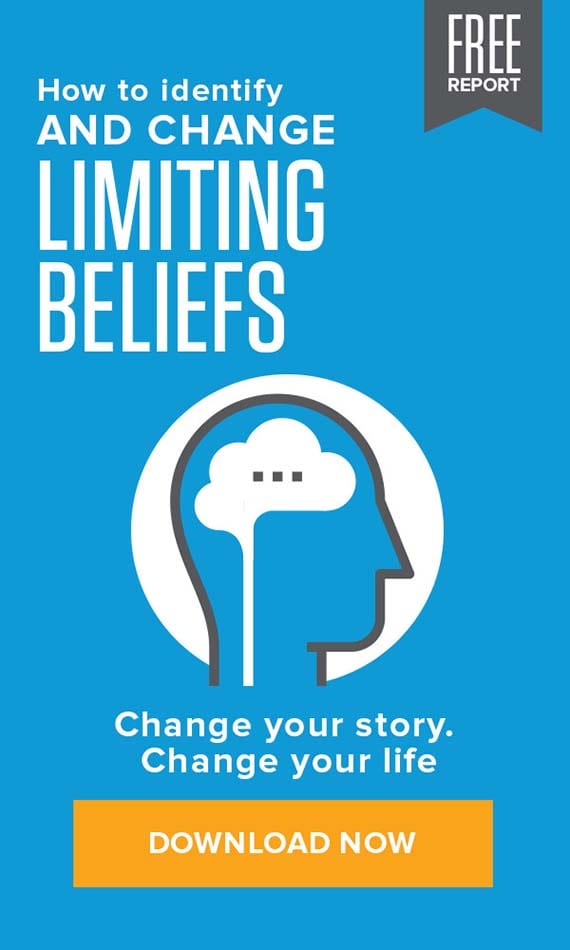Team Tony cultivates, curates and shares Tony Robbins’ stories and core principles, to help others achieve an extraordinary life.
4 essential CBT techniques
Proven strategies to transform your mindset today
Mental health is an essential part of overall health. Your mindset affects not only your mood but even physical attributes like blood pressure, heart rate and gastrointestinal functioning. Mental health may be the single best predictor of a happy, fulfilled life, yet not all of us are born with healthy coping skills and emotional literacy. Whether you have a mental health disorder or just want to add more tools to your life skills toolbox, CBT techniques can help.
What is cognitive behavioral therapy?
Cognitive behavioral therapy focuses on the relationship between thoughts and behaviors. It began taking shape in the 1940s thanks to the contributions of several psychologists and is globally recognized today as an effective strategy for treating mental disorders and for overall self-improvement. CBT strategies are often used to treat conditions such as depression, anxiety, PTSD, OCD and addiction.
At its core, CBT is based on the belief that we control how we perceive and react to events, a philosophy that Tony shares. Tony’s methods incorporate many ideas that are also popular CBT techniques – and have helped many people. One of those people is Elizabeth Pietrzak, a woman with multiple personality disorder (MPD) who worked her whole life to overcome self-destructive behaviors and depression. She thought that by treating her MPD, she would be happy, but her journey had only begun.
Through Tony’s 30-day Personal Power program, Elizabeth learned techniques that transformed her life. She learned how to master her emotions and change her focus. She learned that happiness comes from within. She set health, career and relationship goals. In a letter to Tony, she writes, “I’m getting to know my children and grandchildren, but most importantly, I’m getting to know me.” That’s what CBT techniques are all about.
Cognitive behavioral therapy techniques
Cognitive behavioral therapy is a wide field with many different subsets. All CBT techniques have a few things in common: they are solution-oriented and involve taking action and responsibility for your own emotions and behavior.

Practicing mindfulness
Many CBT strategies are related to mindfulness. One of the most common cognitive behavioral therapy techniques is reframing negative thought patterns. This involves identifying your limiting beliefs – the negative thoughts you hold about yourself – and replacing them with empowering beliefs. Learning how to recognize and stop negative thoughts before they’re able to affect your behavior is one of the top goals of cognitive behavioral therapy.
Other CBT techniques for mindfulness include relaxed breathing: Breathe in for 5 seconds, hold it for 20 seconds and then exhale for 10 seconds. Do this 10 times, focusing on each breath. You’ll feel relaxed and energized. Priming is another powerful addition to your daily routine – Tony himself starts every day with 10 minutes of priming.
There are many more relaxation techniques, from meditation to acupressure. Find one that works for you and you could transform your life.

Scheduling activities
For those who are depressed or anxious, it can seem like a herculean effort just to get out of bed or leave the house. Scheduling activities, also called behavioral activation, is one of the most beneficial CBT techniques for such people. But those who are able to get to work and go about their lives can still benefit from scheduling activities, because the key is to do things that are good for you.
Everyone knows the benefits of exercise – more energy, longer life, better mood and more. But not everyone does it. Finding exercise you enjoy and penciling it into your busy schedule is essential to a happy life. When you do that, you’re using the CBT technique of scheduling activities. Actions like volunteering, gardening, having dinner with a friend and even cleaning your house count. So get out there and use your time for something positive.

Setting achievable goals
This cognitive behavioral therapy technique is also known by its clinical name, successive approximation. It means taking large tasks that seem overwhelming and breaking them down into smaller steps. Every successive step gets you closer to achieving the larger goal, and you gain confidence as you complete the more achievable tasks.
The concepts of SMART goals and chunking are closely related to successive approximation. Setting SMART goals is the process of taking a big objective and creating action items that are specific, measurable and achievable, among other requirements. Chunking is a time management method that can help you reach those goals by breaking down your day into manageable blocks of time. Combined, these two techniques provide powerful ways to achieve all you want in life.

Exposure to frightening experiences
This CBT technique is used for several different disorders in different ways. To treat panic and anxiety, the person is purposely exposed to something that triggers them. Treating OCD involves exposure to the event or feeling that causes the compulsive behavior. It’s even used to recall and stop nightmares. The exposure will start small and then build up as the person realizes that nothing bad happens to them.
Exposure is one of the best CBT techniques you can incorporate into your everyday life. Stimulate personal growth by exposing yourself to situations and events that make you nervous: public speaking, for example, or a party where you don’t know anyone. If you’re not growing, you’re dying – and exposure is the ultimate strategy for growth.



